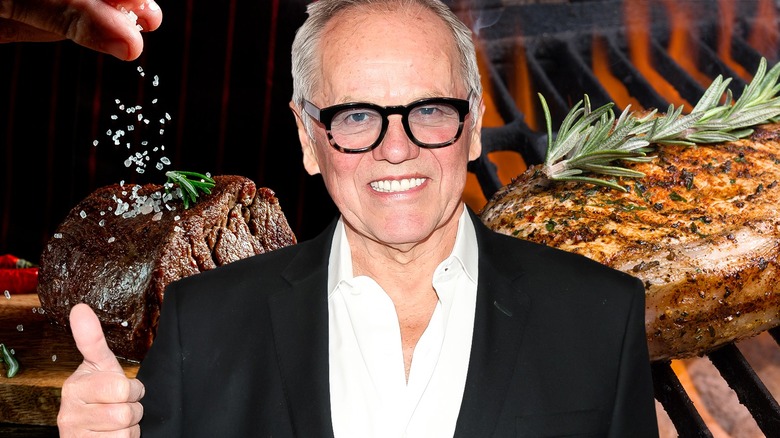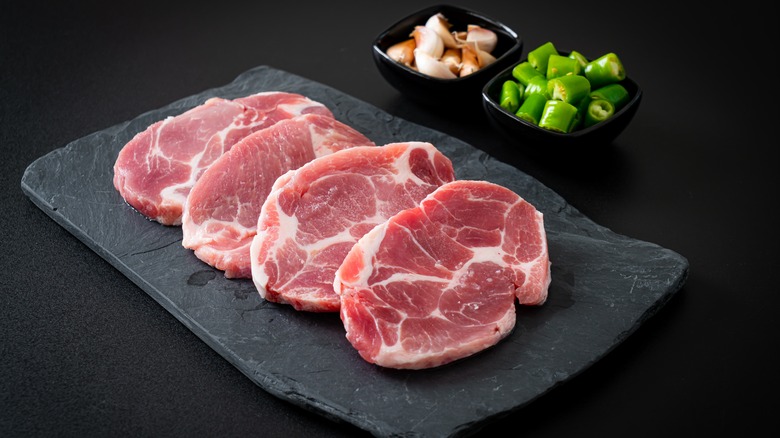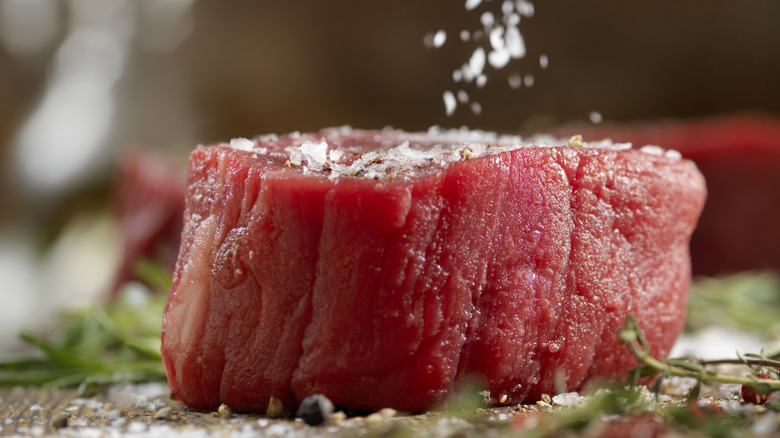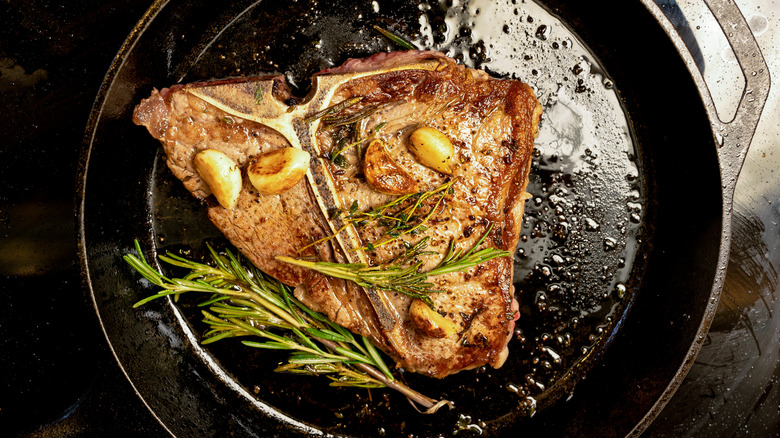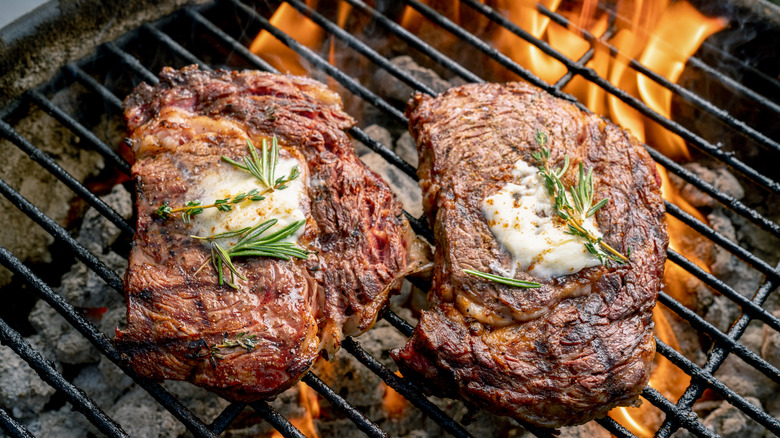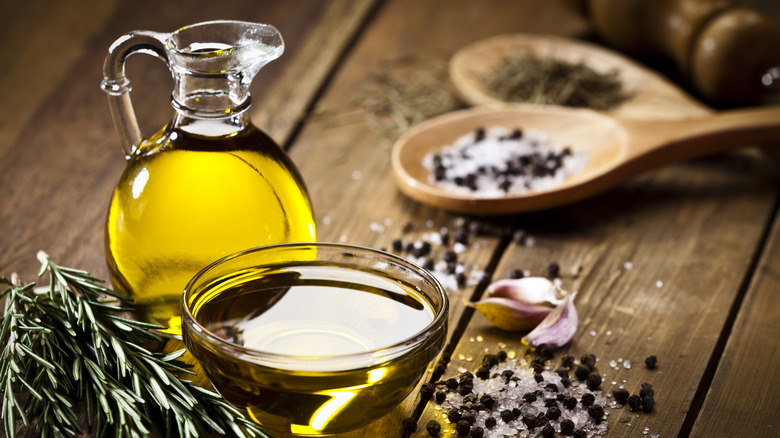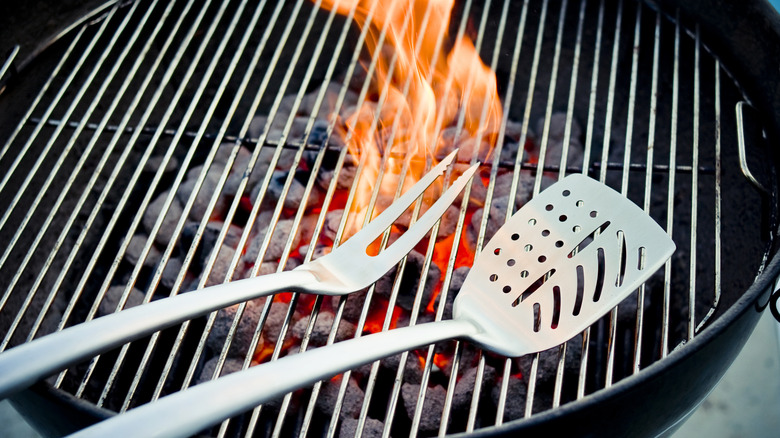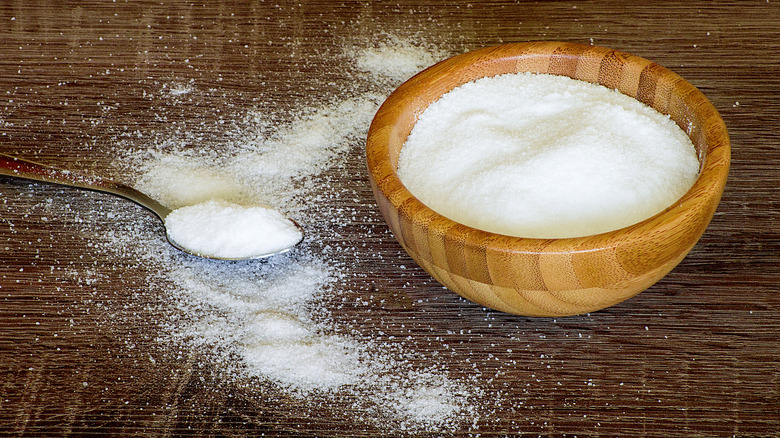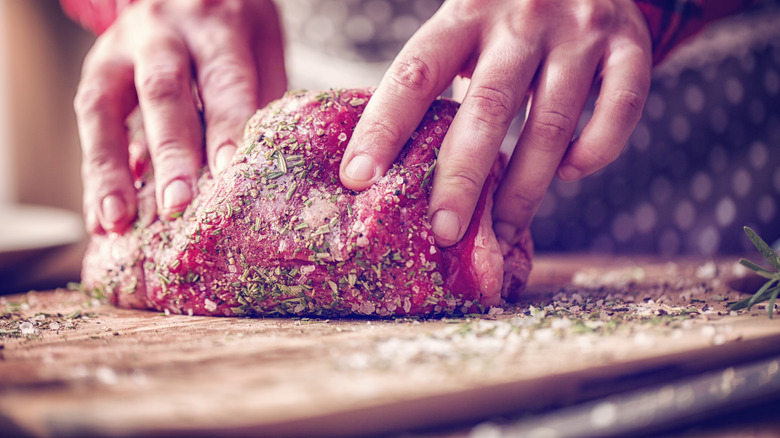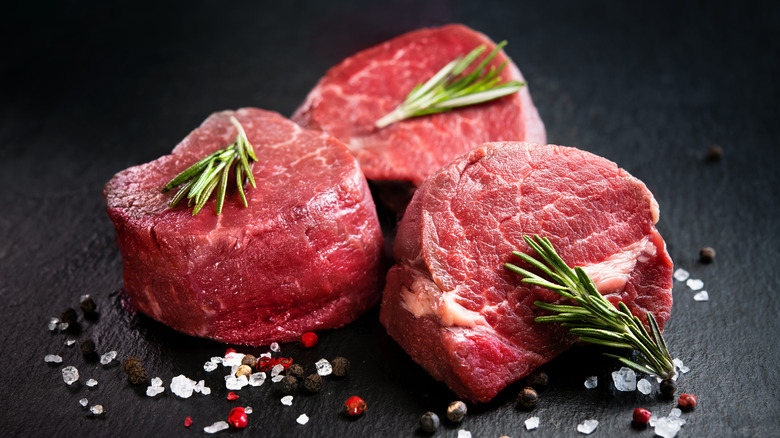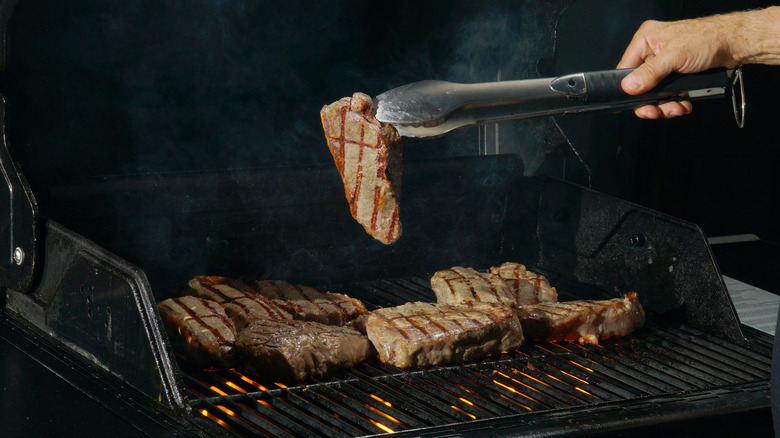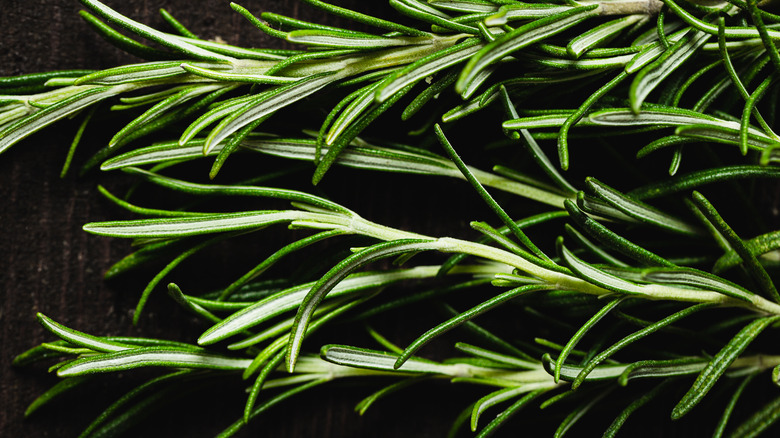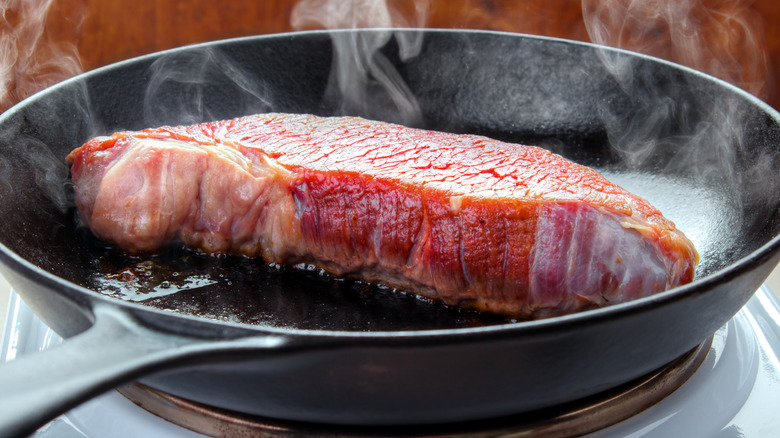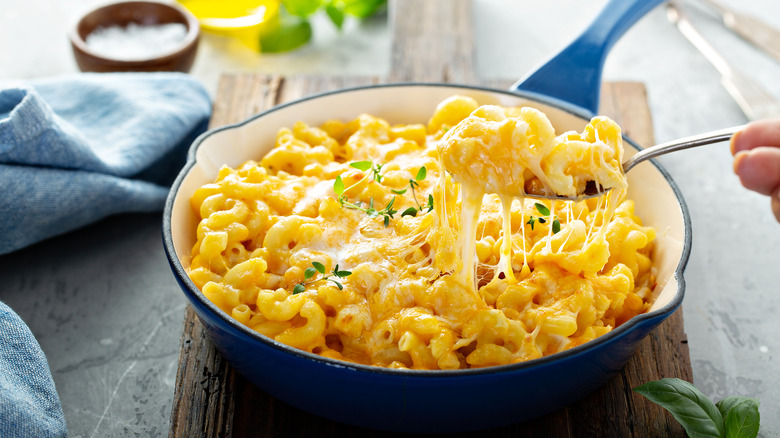Wolfgang Puck's 13 Tips For Cooking The Best Steak
When Wolfgang Puck first came to America, as he once explained on This Morning "Everybody ate their steak well done. They didn't even know how to cut it with a knife and fork, and now people eat it rare, medium rare, so it's much better." We couldn't agree more, which is why we now turn to him for top tips for cooking the best possible steak.
But first, a few notes on the man himself. Puck grew up in Austria and started working in kitchens at the age of 14, but it wasn't until he moved to the United States that his career started to take off. Among his myriad achievements, Puck has particularly distinguished himself in the art of preparing steak, showcasing an unparalleled expertise that has captivated the palates of connoisseurs nationwide. His approach to the dish is characterized by a harmonious fusion of classical techniques and innovative moves. He understands the nuanced balance between the quality of the meat and the precision of cooking methods, resulting in succulent, flavor-rich steaks. But all that is easier said than done, so we thought we'd take a closer look at how he actually achieves these fine steaks in a real live kitchen. Read on to gain some of that insight for yourself.
Let your steak reach room temperature before cooking
To hear Wolfgang Puck talk about steaks, you'd think they were delicate flowers rather than robust slabs of hearty meat. According to Puck, a steak needs to be taken out of the fridge about half an hour to one hour before you intend to cook it so that it can reach room temperature. He does this so the meat can cook more evenly inside and out, as a cold steak risks overcooking on the outside before the inside is even warmed up.
But to tell the truth, he's right. Not because a steak is a delicate flower, but because flavor and texture are. There is a very fine line between a perfectly cooked steak and a tough, chewy one, and the same is true in the space between a rare, juicy steak, and a bland, overcooked one. As such, we would all do well to treat our steaks with the utmost care so that the delicate balance in temperatures is righted, and our intended flavor and textures are achieved.
Properly season the steak
Many home chefs make the mistake of undersalting their steaks. This happens because when we season the top of the steak, many of us forget that there needs to be enough seasoning to cover that area but also everything underneath, down to the very center of the slab of meat. This is especially true when dealing with thicker cuts, like filet mignon.
But the problem of overall lack of seasoning is also very real and must be addressed. Thankfully, Wolfgang Puck explains seasoning very clearly when he tells us that it's often best to cut our own herbs and use fresh varieties whenever possible. These pack far more flavor than the dried variety, which is absolutely necessary for something as robust as steak. A few sprinkles of dried oregano on a big, juicy piece of meat is going to achieve next to nothing. Instead, pick some rosemary or thyme from your garden and toss those sprigs into your pan, or chop them up finely and rub them into your meat. Puck also recommends seasoning both sides of your steak, for good measure. There's no need to make one side of the cut do all the work.
Cook it on high first
Steak is one of those things that cannot be done half-heartedly. When you season it, you have to go all out. When you choose a cut, you're better off splurging on something of high quality, or you'll be wasting your time and money. This is also true for the heat factor: Whatever you do, Wolfgang Puck says to cook the steak on high heat, at least at first.
Indeed, our chef will tell you this any day of the week. As he revealed in a TikTok video, he likes to cook his steak on heat that is "as high as possible." This means that whether you're dealing with a grill, a pan, or the oven, you're going to want to stick to this rule, as it helps the meat sear beautifully. After that though, it's okay to back off a bit. As Puck puts it, "I want to sear the steak so it gets a good crust, and then finish it slow." In practical terms, this means that the best way to cook a steak in a pan is on a high heat setting, after which you can cook the meat on medium until it has reached your desired doneness.
Grill on wood or charcoal
Grilling often imparts its own unique set of flavors onto whichever foods are being cooked. This is especially true when using wood or charcoal, which is one reason why Wolfgang Puck prefers to grill with them. But not just any wood will do. After all, burning is a chemical process, so you want to be somewhat careful about what exactly you're burning and transferring to your food.
First of all, the wood should be thoroughly dry, as moist wood tends to smoke up a lot, which would risk giving your meat a much smokier flavor than what you had bargained for. Second, the type of wood matters. As the Michelin Guide explains, hickory wood can create a flavor that resembles bacon, while pecan unsurprisingly amps up the nuttiness. Mesquite, on the other hand, can produce a flavor that could easily be mistaken for sugar. So before you fire up the grill to cook your steaks, make sure you've selected the right type of wood for the flavor profile you want to create. Also be sure to stay away from certain types of wood when grilling.
Rub oil into the steak
Cooking with oil is pretty much a must, and that is as true for steaks as it is for anything. But according to Wolfgang Puck, there is a method to the madness, and that is that you should be rubbing that oil directly into the steak rather than just pouring it aimlessly into a pan, in places where the steak might never actually touch it. Using the oil in this way will also help your seasoning stick to the meat better. Salt and herbs tend to stick to wet surfaces much better than to dry ones, and the oil can provide that additional moisture. Rubbing the oil into the steak will also make sure you don't overdo it -– too much oil can lead to excess grease, which in turn, can keep the steak from forming that signature caramelized crust.
There is one other tip you should know to pull off this trick, which is that you don't have to use the most expensive olive oil you can find. The steak is going to go into a pan or on a grill at a very high temperature, which will very quickly turn that oil into smoke. It would be a shame to waste good, expensive olive oil on such a task. Wolfgang Puck saves the good stuff for salads or fish — where you'll actually be able to taste it.
Prepare the grill ahead of time
Cooking meat on the stove is a pretty simple process. You turn the stove on a few minutes before you plan on putting your steak in, and that's all it really takes to get the pan nice and hot. But the grill takes a little more forethought than that. In fact, Wolfgang Puck suggests lighting your grill – and specifically, your charcoal briquettes — a good hour before you actually start grilling your steak. This gives the charcoal time to simmer down a bit before show time, otherwise, you'll basically be cooking on an open flame, which can quickly lead to a burnt steak.
Indeed, being in control of the temperature is the key to making a successful meal. When the briquettes are too hot, you may quickly lose control. Conversely, embers can be shifted around more easily to create various heat zones in your grill, allowing you to cook the steak on high, medium, or low heat, depending on where you place it. This is not so simple to do with full-on fire.
Avoid iodized salt
If you follow celebrity chefs at all, you may have noticed that they can be picky about their ingredients, and usually for good reason. For instance, Wolfgang Puck tends to avoid iodized salt when cooking steaks. As he explained to Masterclass, he believes this ingredient lacks flavor and is not particularly healthy. As a chef and not a nutritionist, he might not have a keen insight into the latter point. But his taste buds don't lie, so if he says it lacks flavor, it probably does.
Instead, Puck suggests using sea salt or fleur de sel. Indeed, sea salt tends to have a more unique flavor than table salt, in part due to its naturally occurring minerals. Meanwhile, fleur de sel has a much more delicate flavor and composition than regular sea salt, so it tends to be used as a finishing salt, lest it disintegrate. Ultimately, while all salt comes from the sea in some shape or form, the size of the crystals and the location in which it was harvested will have the biggest impact on taste and texture, so the differences do matter.
Let the steak rest after seasoning it
All cooks need to rest at some point during their meal preparation. Whether it's to take a breather or a sip of wine, we all need to pause for a moment and take stock of what's going on. According to Wolfgang Puck, the same is true for the food that's being cooked, especially when it comes to steak. This first resting period should occur after the steak is seasoned. Salt has drying properties, so you'll want to make sure it has enough time to penetrate the meat and allow the juices to be reabsorbed after the initial drying phase. To this end, Puck lets the seasoned steak rest for about an hour before he starts cooking it.
But he also knows that this is not the only time in which to let your steak rest. As he explained on Fox 5, it's important to let the steak rest for 10 minutes after cooking as well, to avoid letting the juices run off. The juices are what help make the steak what it is. As Puck says, "if you cut into it right away, you get dry meat" — and that is no one's idea of a good steak.
Use good quality meat
No matter how good your recipe may be, it won't do a thing to help your steak if you're using bad quality meat. For the good quality stuff, head to your butcher and pay attention to the marbling -– the more, the better. Once you've accepted this core tenet, it's time to move on to the cut, which also determines quality.
Wolgang Puck, for one, prefers the rib-eye, as he explained on a demonstration with The Independent. Indeed, as he says, "one of my favorite ways to eat meat, is if you can get the meat with the bone in, that way you get more flavor and more juice." He goes on to name drop the porterhouse and tomahawk cuts, saying "it's always good to use that." Once you're armed with one or more of these steaks, and a few more of Puck's top tips for cooking this kind of meat, you should be home free.
Don't turn it too often
Wolfgang Puck often talks about the sear on a steak, which refers to the nice crust that forms on a piece of meat after it's been properly seasoned and heated on the outside. And while seasoning and heat are indeed key to this process, so is another factor. In a cooking demonstration aired by The Independent, he revealed that it's also important to not turn your steaks too often as they cook, as this could interfere with that searing process.
In practical terms, this means no flipping. This is not a burger we're talking about here, and in fact, many chefs might also scold you for flipping your burgers too often. So really, this should come as good news. It means less work for you! Just place those big juicy steaks on your pan or scalding hot grill, and let them do all the work, flipping them only once or twice to make sure each side gets a bit of love.
Put rosemary on the grill for extra flavor
Although achieving the perfect steak might not be all that easy, you can't say it's not simple. On paper, it's just a matter of seasoning a piece of meat and cooking it. But as you may know, simple and easy are not the same thing, and what looks like a breeze on paper, can play out very differently in the real world.
This is why Wolfgang Puck's tip for adding flavor to steak, as demonstrated in an interview with Fox 5, will likely come as a breath of fresh air. In this video, he simply adds a few sprigs of rosemary to his grill before the steak goes on, and that's pretty much it. The same can be done if you're using a pan. Just place a few sprigs of your preferred herb in the pan with your steak, and the meat will automatically absorb the flavors of what's cooking around it. Achieving the perfect juicy, aromatic steak might not be that easy, but at least this part is.
Heat the pan really well
One mistake many home chefs seem to make is to turn on the heat, place the pan on it, and then add the ingredients to it. While this might not be a big deal when dealing with soup, for example, having a hot pan is essential to cooking with steak, and in this scenario, the pan simply doesn't have time to get there. As Wolfgang Puck explains on an episode of This Morning, "It's important to heat up the pan really well because you want to give a good sear to the steak."
What this looks like in real life, is a little smoke coming off your pan as soon as you pour in some olive oil. It also helps to use good quality cookware. The cheap stuff can warp more easily over time, causing the steak to slide around, while thin cookware can quickly turn that coveted sear to a full-on burn. What you want instead is a multi-layered stainless steel pan that can easily withstand the heat levels to which you will subject it in pursuit of the perfect steak.
Pair it with mac and cheese
The perfect steak might be enough to make up a good, satisfying meal, but for those nights when you feel like you need a little something more to really fill you up, Wolfgang Puck suggests pairing that steak with a good, hearty mac and cheese. As Puck demonstrated on an episode of This Morning, he starts this part of the meal by preparing a light bechamel sauce, which he recommends cooking for about 20 minutes in order to get rid of any lingering flour taste.
Then he simply adds cheddar and Parmesan cheese and al dente elbow pasta before mixing everything together and baking it. In truth, you could use any type of pasta here, perhaps even leftover spaghetti looking for a new purpose in life. But this meal isn't complete without yet another pairing, because as Puck says, steak and mac and cheese "with a good glass of Pinot, is like the best thing." No objections here.
